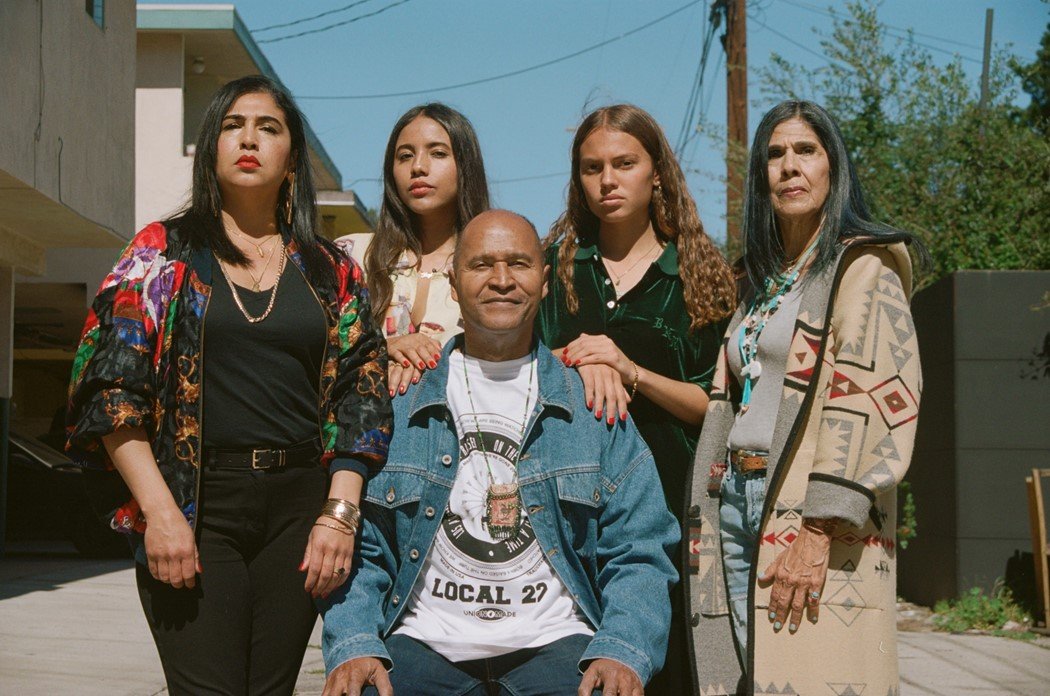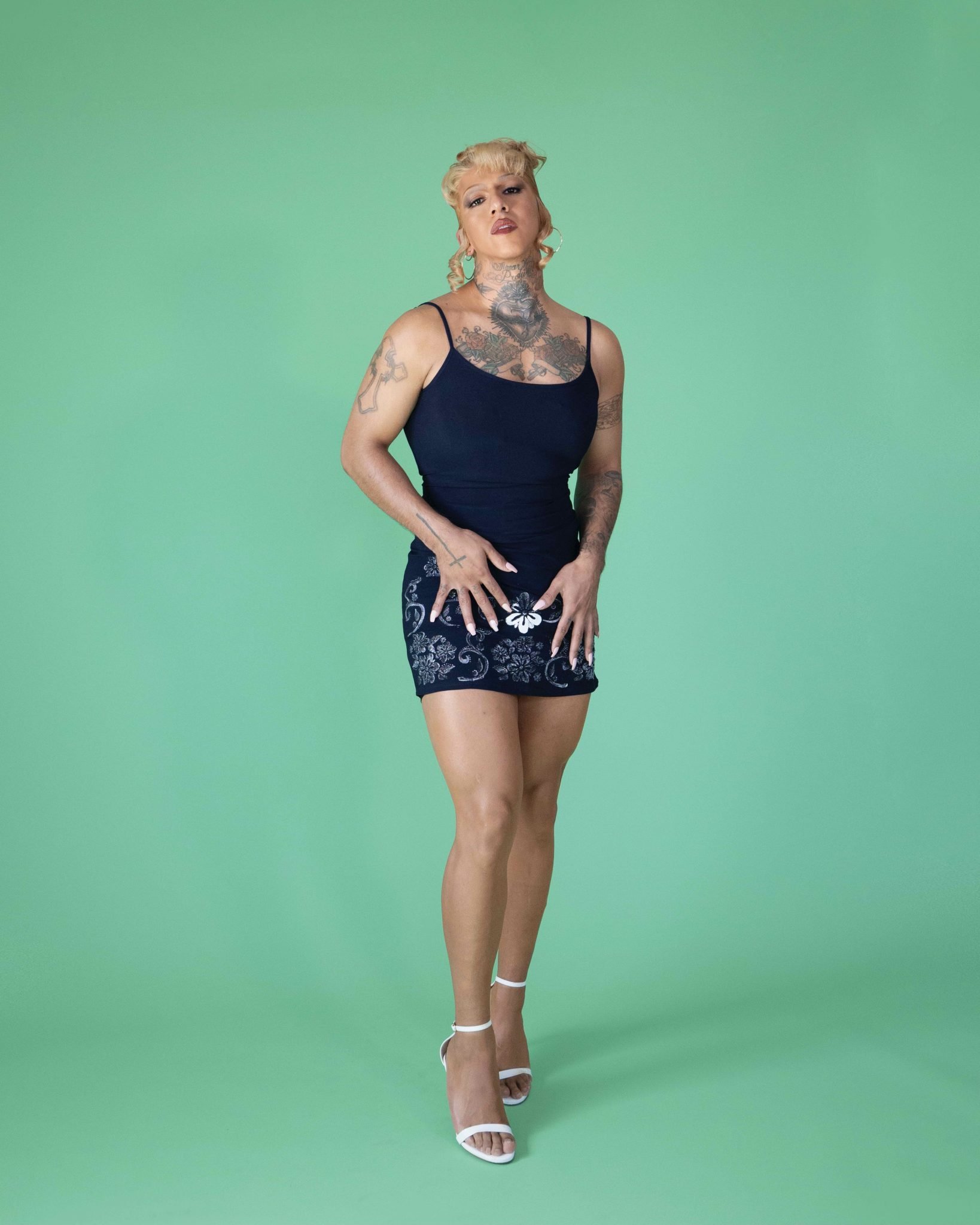
Fabian: Layers of Life
Interview by V Go
Fabian Guerrero (he/him) creates work from the inside out.
From intimate portraits of his Latinx community members, to bright displays of culture clashing, and through the tender depictions of his many facets by self-portraiture, Fabian’s living example teaches other QTBIPOC folx that they, too, are the experts of their experiences who deserve joy not because they have survived, but simply because they exist. Fabian expands perspectives around humanity, identity and the many intersections between, inspiring us to be the living mirrors that reflect the rich complexities of our communities.
V: I was aware of your work through mutual connections, and have always been intrigued by how you document your experiences using visual art. I am so thrilled to be able to discuss your process and let others into your philosophies on existing in the modern world. To start, where are you from, where are you now and where would you like to end up?
FG: I was born in Dallas, Texas and raised partially in Mexico in Valle Hermoso, Tamaulipas. I’m currently living and based in Los Angeles. I feel like I’m still at a stage of my life where I am filling in the cracks, shedding more of my layers to reach a higher self and continuing to evolve as I navigate and grow throughout these next phases of my life.
V: What was young Fabian like?
FG: Young Fabian was a very curious, quiet, but adventurous kid… he daydreamed a lot, always imagining himself being in other worlds and places, thinking he was some sort of super power character from sci-fi novels and movies. Although, young Fabian dealt with a lot at the time, which led him to feel out of place and lost, grow up in multiple households, traveling back and forth from Mexico to Texas, spending the week with his dad and weekends with his mom, then spending the rest in a household where his aunt raised him along with his 3 cousins, sisters and brothers. He was always a never ending migrating source of energy and always finding himself in new spaces and places.
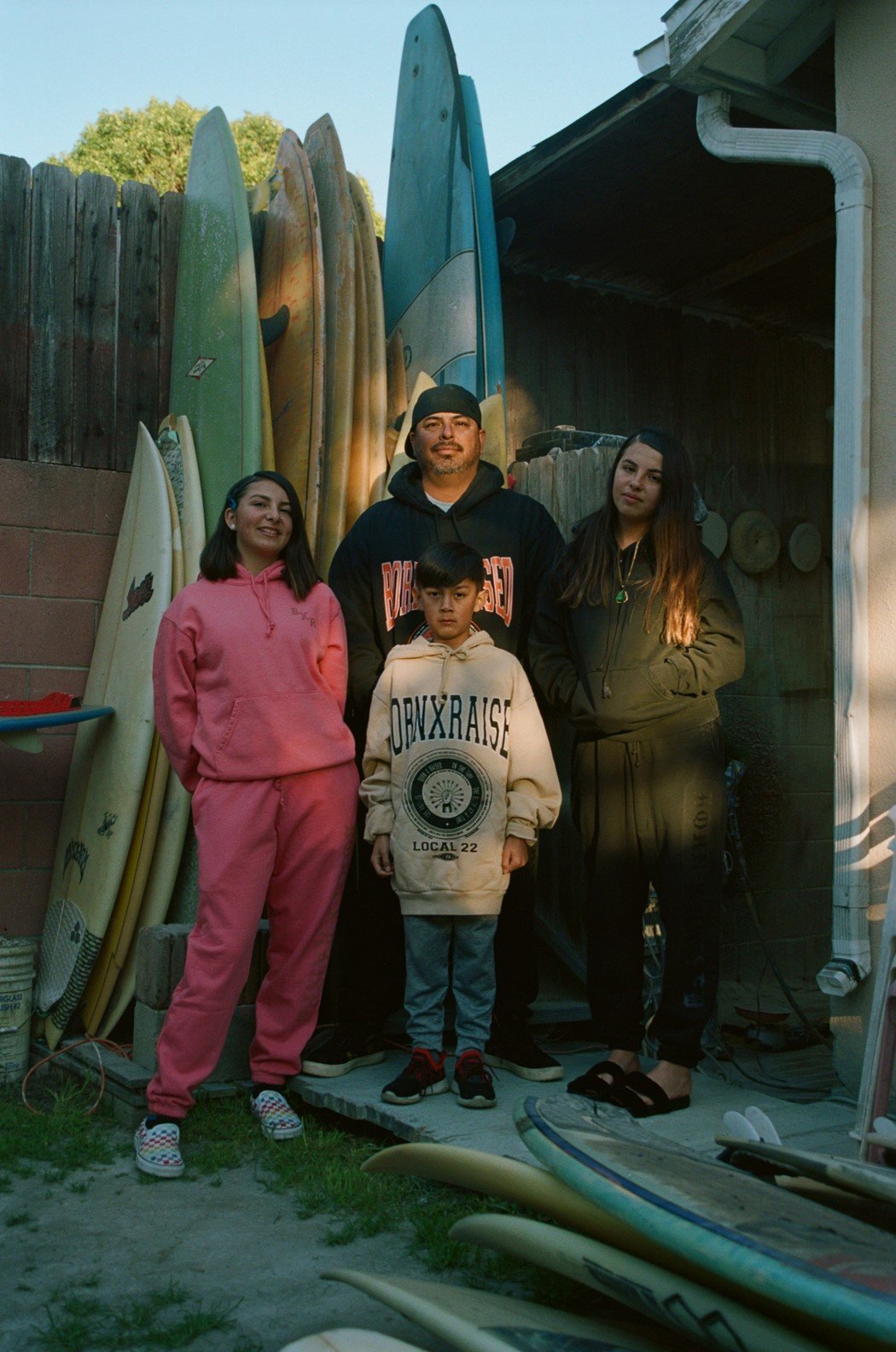
”V: Congratulations on the work you created for The New Contemporaries Vol. 2 exhibit at the Residency Art Gallery. As much as the physical aspect is really involved, there is a kind of separate processing that occurs within ourselves during artmaking. The portraits you created for this exhibit were very reflective of your personal identity and experience. Tell us some more about this series and what this project provided for you spiritually and emotionally.
FG: Thank you! This series was definitely about my relationship to my upbringing; stories and memories that I wanted to bring forward to an audience and gallery space—especially those stories of growing up brown, in the hood, queer and first generation in this country and what it meant to survive and navigate through the traumas and healing that I tend to do with my work. Spiritually, I was able to really tap into that magic I carry within myself, the magic that has been provided through my family and ancestors. This work is not only for the young, teen Fabian, but for my family. I want to live and create the wildest dreams so that my family and the people in our communities are able to resonate with and see themselves reflected through the images I create.
V: Something I have really enjoyed in getting to know you as an artist and human is hearing your detailed stories about growing up in Dallas as a young boy coming into his identity. How does Los Angeles reflect Chicanx culture in a way that is different or similar to your close experiences growing up brown and queer in Texas?
FG: Having been in Los Angeles for about 8 years, I was really able to quickly connect to the spaces brown folks tend to occupy and take space to survive, party, and convene. The smells of brown labor: the blood, sweat and tears is something that is very similar to my upbringing in Dallas, and Texas overall.
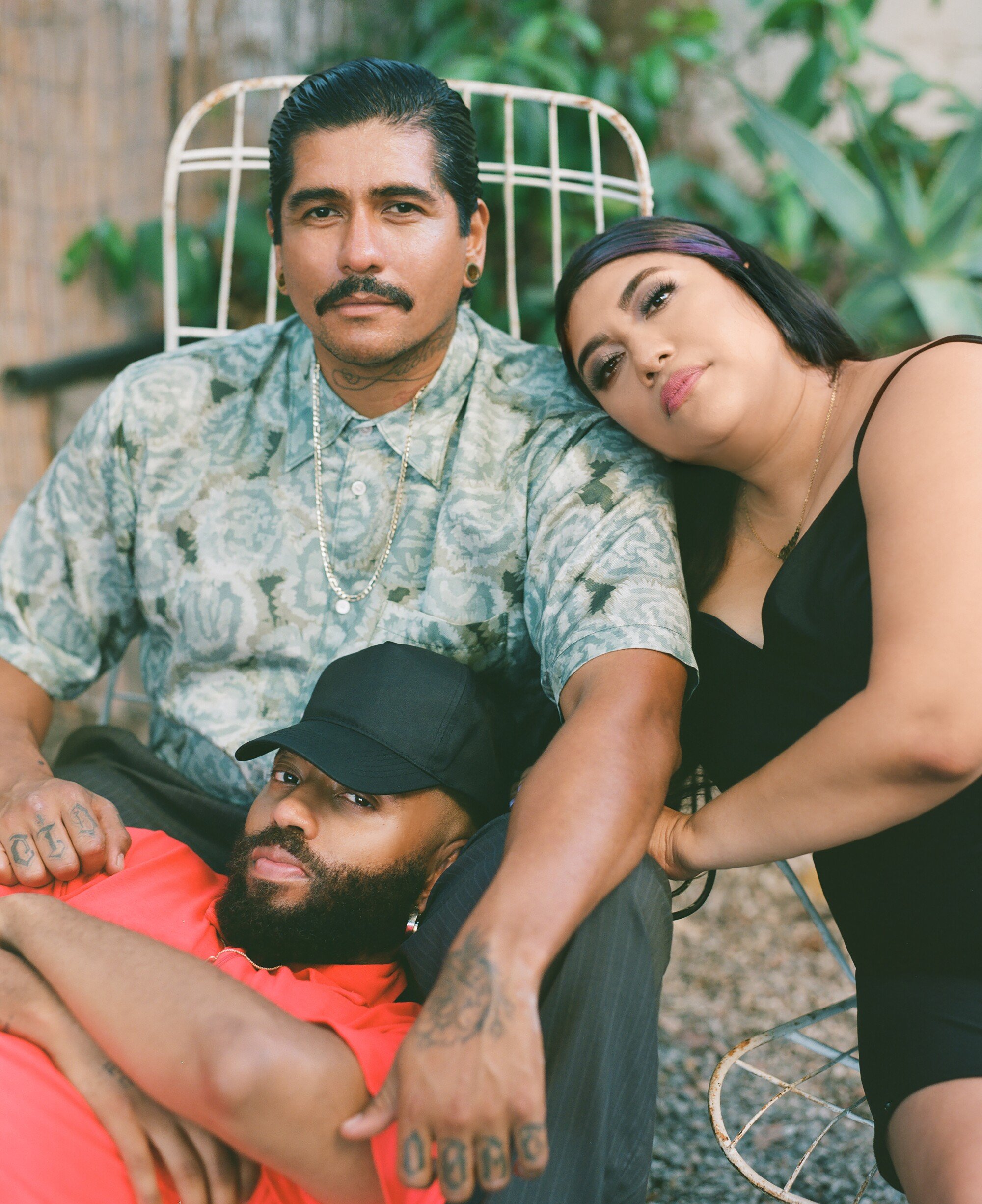
There are similarities in the stories of migrating and what we do to survive and forget our issues by coming together to dance or cook. Two different states may represent different ways of being, but in the end there are so many similarities I’ve been able to see and understand, to learn from being in Los Angeles. I think if brown and queer people from LA, Texas and any other state were to sit down at a table to talk, we would all have something so close to home we can really connect with in our conversations to relate to one another and learn from each other. Being a Tejano living in LA, I am super grateful for the community and family I’ve built here that I can share my intimate moments with. I am able to learn from them and they can learn from me.
V: You have a true investment in uplifting the experiences of folx who are undocumented and from undocumented families through your visual work. You also explore that at the intersection of queerness. Tell us a bit about why that’s important to you.
FG: I think that representation about coming and living in this country as undocumented, coming from undocumented parents, and growing up being first-generation are things that we and will continue to have conversations about…. Conversations about our living experiences and the weight we tend to carry for ourselves and for our families. It is something that we adapt to. We carry the knowledge through our lived experiences to teach our families, to display all this information to the world with hopes of helping the future generations of brown, queer, first generation people.
V: It seems really crucial to make sure your collaborators really align with you to allow for authentic storytelling. How do you find the subjects you collaborate with to translate these experiences into imagery? How do you decide which projects you want to portray with yourself as the subject versus shooting someone else?
FG: One of the most intimate parts of my work is when it comes to choosing a subject. It really ties down to the conversations we have prior to shooting, or even asking they/them/he/she/someone to be the subject in front of my lens. It’s the part where we get to connect, relate, connect dots and build bridges from our experiences and stories on where and how we grew up.
And I think that is the moment I love to see in my images: that relationship, the camera and the subject all represent a symbol of love, resilience, tenderness, power and pride.
When it comes to my self-portraits these are specific memories that only I can connect with to perform and tell the stories based out of my own personal experiences in my life I recreate, portray and play with. When choosing a subject for my work, it is my way of sharing space, a moment to display something that is so dear to us, but also representing someone in our community that is doing important work creatively, emotionally, physically, and/or mentally. I work with people that are representing the culture and community overall; it is something I will continue to do for years to come by making a visual history book of all our faces, bodies and stories that have value and power.
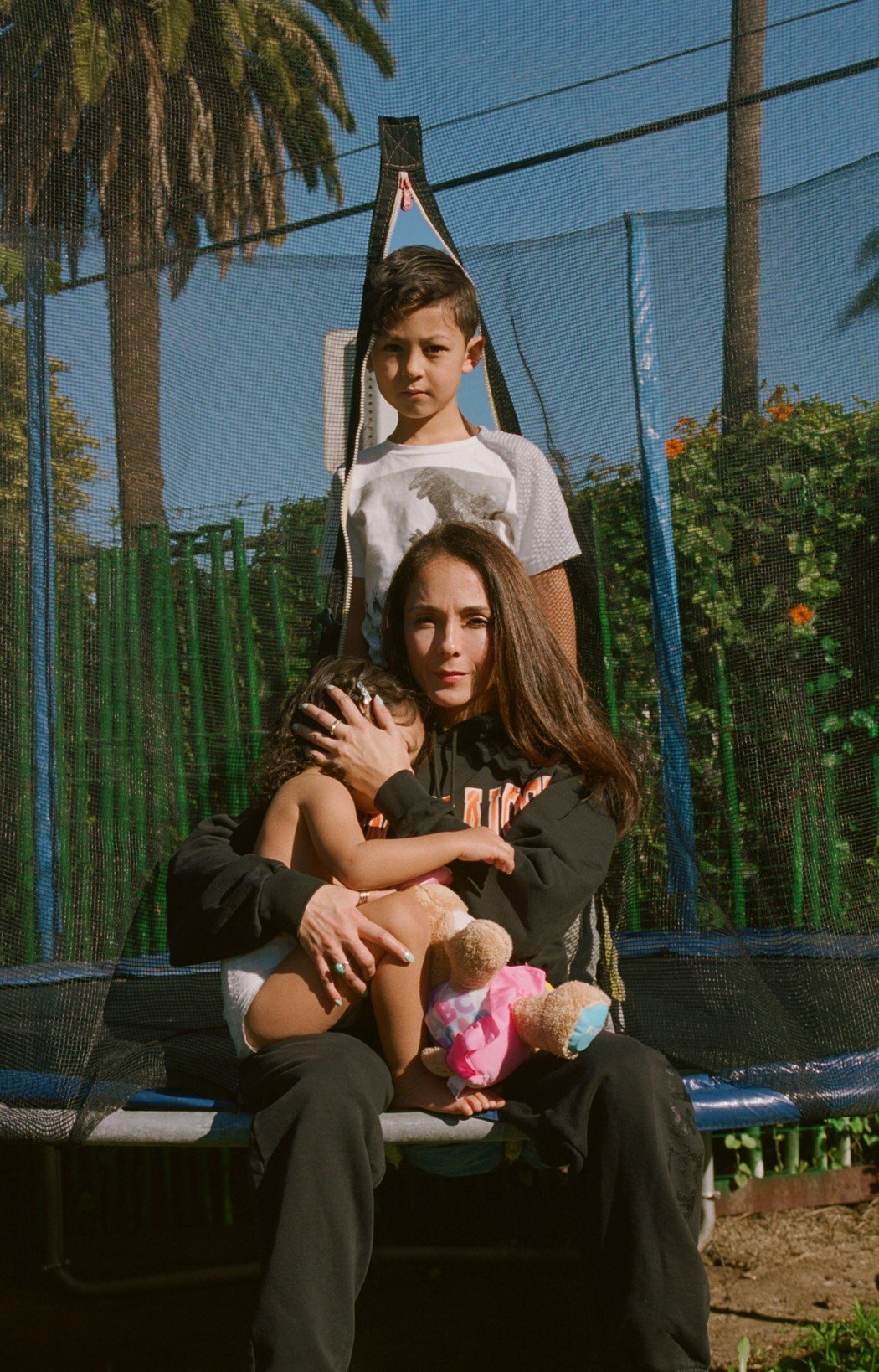
V: Give us 3 things that are really inspiring to you right now.
FG: Music! From corridos and boleros, to cumbia, rebajadas, rap, chopped & screwed, and R&B: these inspiring sounds I grew up with all my life from living in the South to growing up in Northern Mexico, Monterrey y Tamaulipas. Especially the sounds of rebajadas and “chopped & screwed”: these sounds and style of music are so similar, yet represent two different aspects and culture of my surroundings and their meanings for Black and brown folks. I am able to connect everything from classics to sounds that also shaped me like rap and R&B. Because now I am able to really see myself beyond just one type of way of being, I have so many layers that continue to represent so much information through my work in the years to come.
Another inspiration right now is community, whether that's in Los Angeles, Texas, Mexico or throughout other states. Places where brown and Black POC folx live to really connect these webs, these bridges, where we continue to fight for our justice, rights, identity, racism, and towards freedom movements and representations that I may be able to also display into my work.
V: What does queerness mean to you?
FG: Queerness for me is really having joy and freedom with yourself: no hesitations. Being really in tune with your body, looking at yourself in the mirror to digest every part of you, and the ability to love. We have such a power of transformation and evolution that is impeccable. And being queer also is sensual and poetic, we really do get to just show this aspect of what love can look like and what expression can be. We really just don’t give a fuck and I love it!
